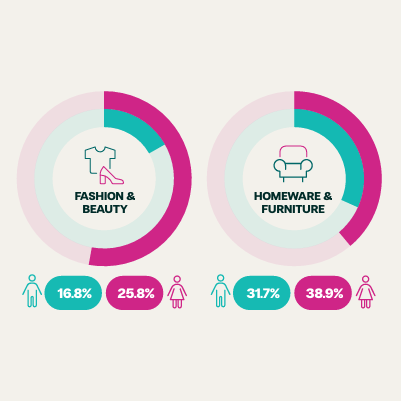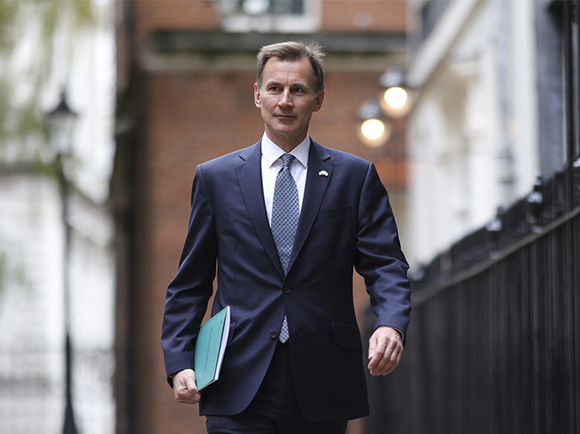Bracketing and Buy Now, Pay Later: Will BNPL increase returns for my business?

According to Statista, 35% of online returns in the UK are for clothes. This is followed by shoes (17%), bags and accessories (12%), consumer electronics (9%), accessories (7%), bags and luggage (7%), and household appliances (7%). The list goes on. Fashion as a category clearly accounts for the biggest proportion of returns overall. And for one simple reason: Bracketing.
Bracketing is when a consumer buys an item in multiple sizes, colours or styles to try on at home, only to return them later. There’s also something called ‘wardrobing,’ which is when a customer buys an outfit, wears it to an event, and then returns it afterwards.
Bracketing is so widespread that up to 58% of clothes shoppers admitted to having bought more than they intended to keep.
It seems harmless to consumers, who think of it like trying clothes on in an in-store changing room. But bracketing is a real problem for fashion and home goods retailers.
Where’s the harm?
Bracketing can be a financial, logistical and environmental nightmare. Each returned item can cost an average of 66% of its cost of an item in fashion, or between $10 and $20 per item.
Merchants have to replace the stock they’ve sold in the warehouse. That means manufacturing, shipping and handling fees for the replacement. If the warehouse is restocked, and the items are then returned, there might not be any space for the returned items in the warehouse. Merchants then need bigger warehouses to house the goods. There’s also the cost of repackaging, remarketing and reselling the returned items.
And, if the season is about to end, or a new model is due to come out, the merchant ends up with stock that’s worth less.
And that’s saying nothing about the environmental impact of moving an item to and from a location unnecessarily. It’s so much of a financial and logistical pain, that it’s cheaper for merchants to let the customer keep the unwanted item and send out a replacement, or to destroy the returned item and send out a replacement.
Why does bracketing happen in ecommerce?
In fashion, 48% of consumers say they return an item because sizing or other options aren’t clear. Meanwhile, 36% say it’s because they’re not able to try the items in-store. 26% say it’s because they’re trying unfamiliar brands, and 23% say it’s because their weight has changed.
In other words, poor product information plays a significant role.
Free-returns – something large merchants have begun to scale back on – also makes it easy for consumers to buy more than they need and return it. Without a fee, consumers can have items delivered and returned as often as they like (all at the expense of the merchant).
How does Buy Now, Pay Later (BNPL) fit in?
Retail finance products like Buy Now, Pay Later are said to increase returns for merchants. Shoppers using BNPL can buy a basket full of items while only paying a fraction of the upfront cost. Consumers can then try the items at home, choose the ones they like and return the rest, all before they’ve been fully charged for the transaction.
Some BNPL providers actively encourage shopping in this way. Klarna, for example, suggests customers try before they buy, using their Pay in 30 Days product. Retailers like H&M suggest the same for their pay later service.
Though a lack of data makes it difficult to confirm just how often this occurs, the fashion sector has both the highest rate of returns and highest BNPL usage. Divido data found that 38% of retail finance consumers have shopped for fashion and beauty products, and electronics (30.9%) – sectors that report above average returns rates.
Is it just fashion and homeware stores?
Again, a lack of evidence makes this difficult to understand. But, one could expect that BNPL makes bracketing worse for any industry where consumers are already likely to make returns.
How to reduce bracketing for your ecommerce store
So, is there a way to reduce your exposure to bracketing? Let’s explore a few tools merchants can use:
Add a little rigidity to your returns
Many fashion retailers have started charging for returns to reduce the cost and frequency of bracketing. Customers can often still return the item for free in-store. But the additional charge for an online return, and the faff of having to physically enter a store to return or exchange the goods, adds enough friction to make most consumers think twice.
Improved product details
Accurate descriptions, more photos, and thoroughly detailed size guides can go a long way to reduce bracketing and the overall rate of returns to your business. The more product information you provide, the less likely it is that your customers will need to try items at home before sending them back.
Better quality images
Improve the quality of your images, and you’ll likely see a reduction in bracketing. This is because your customers have a better idea of the colour, style and fit of your products, meaning more certainty in their purchasing decisions.
Teach your customers about the environmental impact of returns
Transport is one of the highest emitters of greenhouse gases globally. Adding extra, unnecessary journeys into the lifecycle of an individual product increases the total emissions footprint for that product. It may be worth reminding your customers this at a critical stage in their buying journey – it may put them off buying an item they know they are going to return.
Will Buy Now, Pay Later increase returns for my business?
There is no guarantee that adding retail finance will automatically increase the volume of returns you experience. Sectors with already high rates of returns also tend to see high BNPL usage, but there is a big difference between cause and effect. The flexibility of BNPL may complement your existing returns process and could go some way in increasing returns for your business. But that ultimately depends on your industry, your products, and your customers.
Your product descriptions, the quality of your images, and the leniency of your returns policies also play a role. Adding BNPL could make bracketing easier by reducing the upfront cost of purchasing several colours, sizes and styles of the same item. But if you’re worried about this, there are tools you can use to manage your customer’s behaviour.
Add a little friction to your returns process by charging for handling fees, while still allowing free-returns in-store, and your customers will be less inclined to bracket. Improve your product descriptions and images, and add some info about the environmental impact of returns to nudge your customers towards more responsible shopping habits.
Whether you have the space in your warehouse to process returns, can afford the handling fees, or never update your stock – Buy Now, Pay Later has the potential to impact your returns process. How much it impacts your business, is up to you.
Keen to know more?








